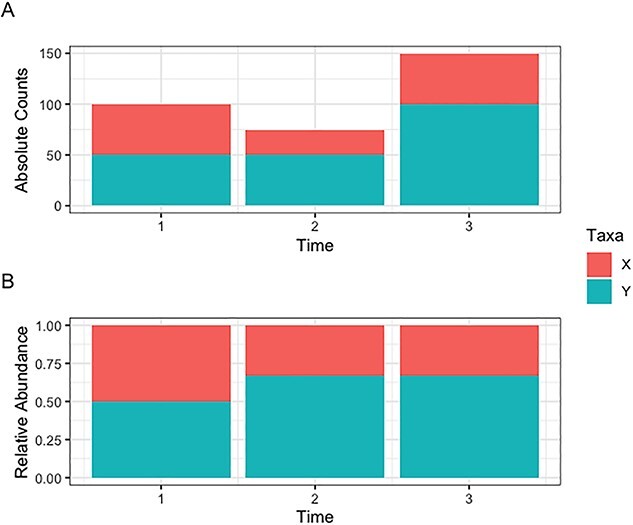Figure 4.

(A) For a given individual, we consider the true abundances (absolute counts) of two taxa (X and Y) across 3 time points and (B) their corresponding relative abundances. In (A), Y’s true abundance does not change from time 1 to time 2 but increases from time 2 to time 3. After time 1, Y’s true abundance is greater than X’s true abundance. In (B), after calculating relative abundance, both taxa have a relative abundance of 1/2 at time 1, but the relative abundance of X and Y changes to 1/3 and 2/3, respectively. Thus, we might incorrectly interpret that the abundance of Y increases from time 1 to time 2 and does not change from time 2 to time 3 (Figure adapted from [23] for a longitudinal scenario).
